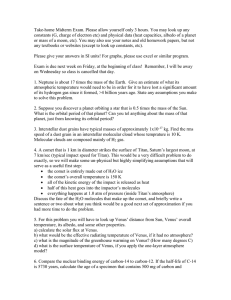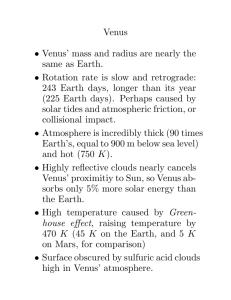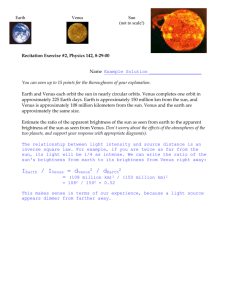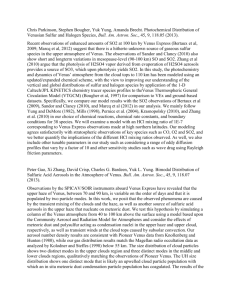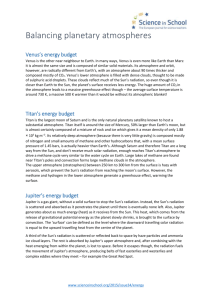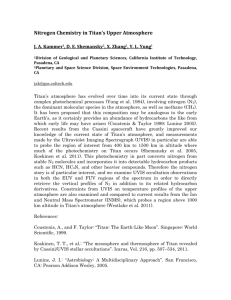Aerosol formation in the atmospheres of Titan and Venus
advertisement
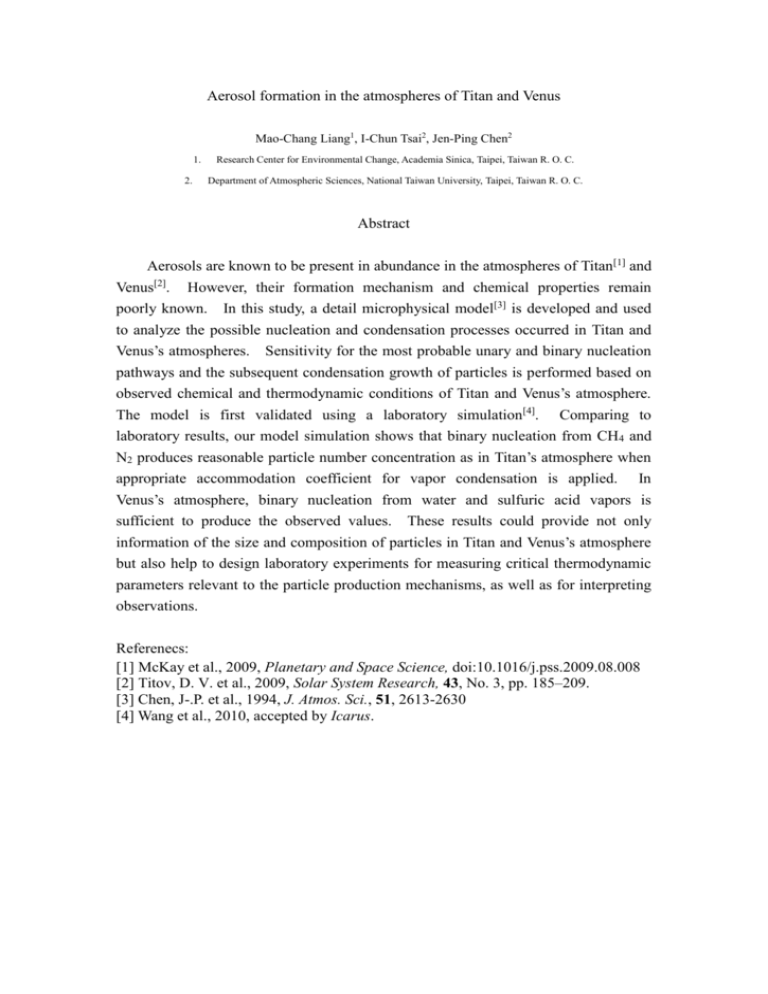
Aerosol formation in the atmospheres of Titan and Venus Mao-Chang Liang1, I-Chun Tsai2, Jen-Ping Chen2 1. 2. Research Center for Environmental Change, Academia Sinica, Taipei, Taiwan R. O. C. Department of Atmospheric Sciences, National Taiwan University, Taipei, Taiwan R. O. C. Abstract Aerosols are known to be present in abundance in the atmospheres of Titan[1] and Venus[2]. However, their formation mechanism and chemical properties remain poorly known. In this study, a detail microphysical model[3] is developed and used to analyze the possible nucleation and condensation processes occurred in Titan and Venus’s atmospheres. Sensitivity for the most probable unary and binary nucleation pathways and the subsequent condensation growth of particles is performed based on observed chemical and thermodynamic conditions of Titan and Venus’s atmosphere. The model is first validated using a laboratory simulation[4]. Comparing to laboratory results, our model simulation shows that binary nucleation from CH4 and N2 produces reasonable particle number concentration as in Titan’s atmosphere when appropriate accommodation coefficient for vapor condensation is applied. In Venus’s atmosphere, binary nucleation from water and sulfuric acid vapors is sufficient to produce the observed values. These results could provide not only information of the size and composition of particles in Titan and Venus’s atmosphere but also help to design laboratory experiments for measuring critical thermodynamic parameters relevant to the particle production mechanisms, as well as for interpreting observations. Referenecs: [1] McKay et al., 2009, Planetary and Space Science, doi:10.1016/j.pss.2009.08.008 [2] Titov, D. V. et al., 2009, Solar System Research, 43, No. 3, pp. 185–209. [3] Chen, J-.P. et al., 1994, J. Atmos. Sci., 51, 2613-2630 [4] Wang et al., 2010, accepted by Icarus.
